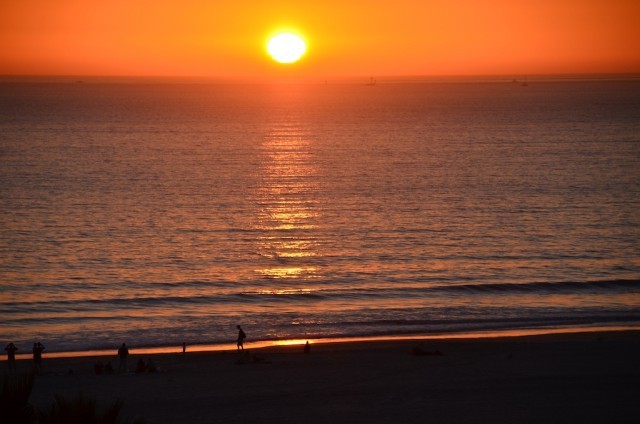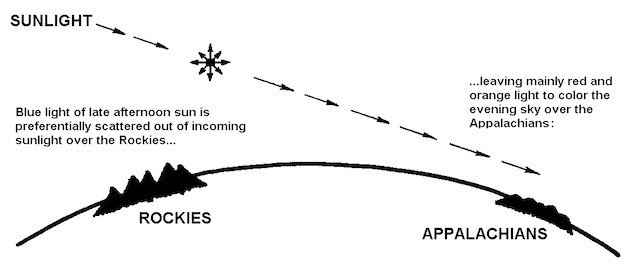What Makes a Sunset Orange or Red?
Note: click photo for a larger view
I shot this beautiful sunset on Coronado Beach about a month ago. While we all admire a beautiful sunset, have you ever wondered what makes a sunset orange or red?
Here’s this from Stephen F. Corfidi, NOAA/NWS Storm Prediction Center:
“The familiar blue of the daytime sky is the result of the selective scattering of sunlight by air molecules. Scattering is the scientific term used to describe the reflection or re-direction of light by small particles. Scattering by dust or by water droplets is responsible for the shafts of light that appear when the sun partly illuminates a smoky room or mist-laden forest. Selective scattering, also known as Rayleigh scattering (after the nineteenth century English physicist Lord Rayleigh), is used to describe scattering that varies with the wavelength of the incident light. Particles are good Rayleigh scatterers when they are very small compared to the wavelength of the light.
Ordinary sunlight is composed of a spectrum of colors that grade from violets and blues at one end to oranges and reds on the other. The wavelengths in this spectrum range from .47 um for violet to .64 um for red. Air molecules are much smaller than this — about a thousand times smaller. Thus, air is a good Rayleigh scatterer. But because air molecules are slightly closer in size to the wavelength of violet light than to that of red light, pure air scatters violet light three to four times more effectively than it does the longer wavelengths. In fact, were it not for the fact that human eyes are more sensitive to blue light than to violet, the clear daytime sky would appear violet instead of blue!
At sunrise or sunset, sunlight takes a much longer path through the atmosphere than during the middle part of the day. Because this lengthened path results in an increased amount of violet and blue light being scattered out of the beam by the nearly infinite number of scattering “events” that occur along the way (a process collectively known as multiple scattering), the light that reaches an observer early or late in the day is noticeably reddened. Thus, it could be said that sunsets are red because the daytime sky is blue. This notion is perhaps best illustrated by example: A beam of sunlight that at a given moment helps produce a red sunset over the Appalachians is at the same time contributing to a deep blue, late afternoon sky over the Rockies.”
Well, there you have it. The next time you’re watching a sunset with your grandchildren, impress them with this little science lesson. 🙂
Link: The Colors of Sunset and Twilight
If you enjoyed this article, sign up for our monthly newsletter to keep abreast of our best travel tips, on-location reviews, exclusive travel offers, group travel events, and much more.

 The Roaming Boomers
The Roaming Boomers





